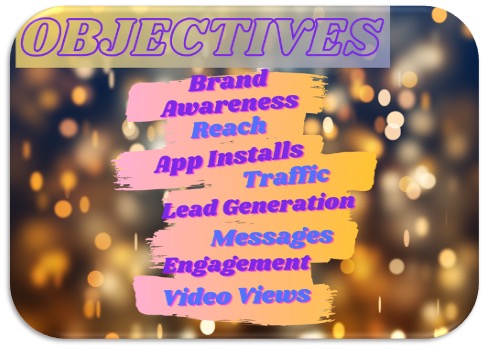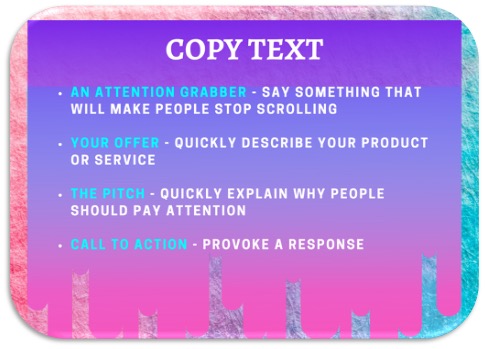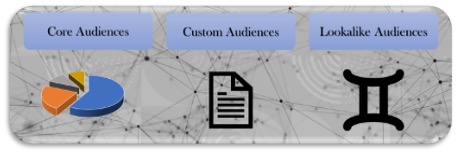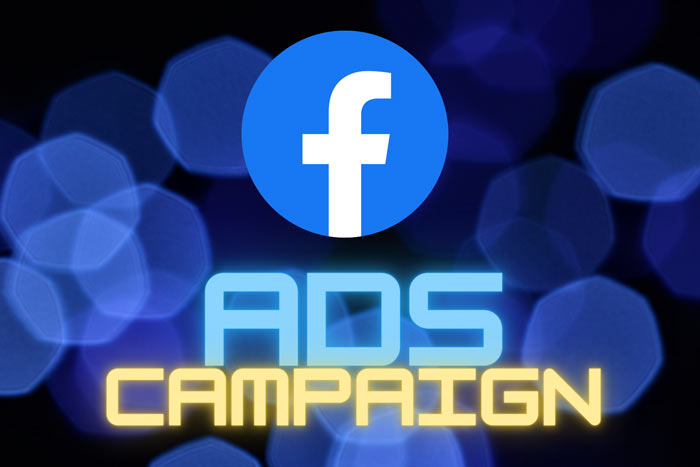The world of Facebook advertising is deep and can be intimidating at first, but don’t worry, you can dominate the competition if you approach it with strategy and creativity.
Creating Your Ad
Creating Facebook ads is easy to do, but hard to do right. There is a lot more that can go wrong than can go right, but there are some guidelines you can use to help create effective ads.
The first thing you need to do is choose an objective. Facebook has 8 objectives to choose from:

Knowing what you are setting out to achieve with your marketing campaigns will help inform how to craft your ads to achieve your goals.
Designing your ad to work toward your objective is crucial. This starts with picking the right format. Facebook offers 8 formats to choose from:
- Photo
- Video
- Stories
- Messenger
- Carousel
- Slideshow
- Collection
- Playables
There are a couple things to keep in mind when making your ad. You’ll want to make an offer that solves a problem for your target audience. Problems can come in a number of forms and you’ll need to use your product or service, as well as the needs of your ideal customer, as a guide for how to position your marketing message. The language you use needs to be enticing and solution oriented.
A simple formula to follow for your copy text might be:

Your ad needs to be aesthetically striking in order to catch people’s attention. We are surrounded by advertisements as a daily norm, so your ad needs to stand out.
Make it easy to contact you through click to call or click to message. Click to message is a really cool option because people seem to be moving more and more toward text-based communication. Click to message can be used to send people to Messenger, Instagram or WhatsApp.
Targeting
Once you have a killer ad made, it’s time to get it in front of the right people. You can choose which platforms your ads will appear on including Facebook, Instagram, Messenger and Audience Network (external apps). Which platforms do your ideal customers use?
Facebook ads have the ability to get highly targeted, and you should definitely take advantage of that. Facebook has 3 main Audiences that you can choose from

Core audiences are developed by more traditional segmentation techniques like location, demographics, behavior, life events and interests. You can really hone in on ideal customers with these targeting techniques.
Custom Audiences are for remarketing campaigns. You can use contact lists from Facebook, your CRM, email lists, etc. You can encourage in-app actions or use Pixel to show ads to people who have previously viewed specific pages on your website.
Lookalike audiences are based on a source audience you provide of your best customers. Your ads will then be targeted to people with shared characteristics. This is an easy way to reach people that are already similar to your current customers.
It’s really important to tailor your message to your specific audience. For example, you should approach people who have never heard of your company differently than you would with someone that you are remarketing to. This is actually one of the biggest strengths of targeting, you can get more personal and connect with people on a deeper level because you know exactly who you are reaching.
Another easy way to find the right people to get your message to is to target the followers of your competitors. These people are already interested in your niche, so they may be more receptive to what you have to say.
Try to be as specific as possible with your targeting and do A/B testing. If you choose too many audiences to target it can be difficult to tell which interests are getting you results, so try to limit your ads to 3 target interests.
Be both creative and logical with your targeting. Your competitors will most likely be using the obvious choices for targeting, this makes targeting those audiences more competitive. For example, if you sell furniture, instead of targeting people who like furniture, try targeting people who just moved, or interior designers, or new home owners.
Conversions
No matter what objective you have chosen for your ad, the end goal will be conversions. You want people to buy your product or service.
It is important to pay attention to the experience that people have when interacting with your ad. Make it as easy as possible for them to convert, try to make as few steps to conversion as possible.
If you are using click to message or click to call, how is their experience with these features. Do you answer in a timely manner? If you are taking them to your website, does the landing page have the same message as the ad they clicked on?
Make the interaction process simple and consistent, this will help promote more conversions.
It may take a few days for your ads to optimize, give it about 3 days to start getting results. Run test ads on a low budget ($5/ day should work) with highly targeted audiences to find the ads that will produce the best results and focus on the winners.
Conclusion
Running effective campaigns will take testing, creativity and optimization. Be sure you have tailored your ad to fit your objective as well as your target audience and make sure it looks great to stand out from the rest. Targeting is extremely important; be specific, be creative and be organized. Use trial runs on low budgets to see how ads will perform and use this info to optimize and choose the ads that will perform.
Be patient and optimize as you go! What’s your go to targeting strategy?
Direct Placement, LLC is a digital marketing agency dedicated to shaping our advertising efforts to best fit your company’s needs. We are a Google Premier Partner and Bing Ads Accredited Company that specializes in a number of digital advertising formats. From our trademarked flat-rate SEM marketing service to social media marketing and even directory profile creation, we have a number of services that we can use to help your company thrive. Contact Direct Placement, LLC to learn more about how we can start transforming your business one click at a time! You can also follow us on Facebook, Twitter, or Blogger for more regular marketing content.

